- Administrator
- Albums and Singles
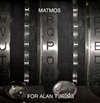 This tour-only 3" CD is a postscript to Matmos' recent The Rose Has Teeth in the Mouth of the Beast, a masterpiece of audio portraiture that payed homage to queer heroes. This three-song EP continues the theme, taking as its subject the mathematician, philosopher, cryptographer and homosexual martyr Alan Turing, and featuring the vocals of David Tibet as well as sounds sourced from a functioning Enigma Machine.
This tour-only 3" CD is a postscript to Matmos' recent The Rose Has Teeth in the Mouth of the Beast, a masterpiece of audio portraiture that payed homage to queer heroes. This three-song EP continues the theme, taking as its subject the mathematician, philosopher, cryptographer and homosexual martyr Alan Turing, and featuring the vocals of David Tibet as well as sounds sourced from a functioning Enigma Machine.
It's easy to see why Matmos would be interested in the life and work of Alan Turing; as academics and electronic musicians, the duo utilizes the kind of "thinking machines" that Turing first conceptualized. Turing was a codebreaker working for British intelligence during World War II, and was instrumental in breaking the coded messages created by the Nazi Enigma Machine. Matmos were allowed access to a working prototype of the Enigma Machine by the mysterious Cryptography Research corporation, which they recorded and use as raw sound material for the first track on the EP. A further layer of coded signification is contributed by a complex piano melody, a hyperkinetic fugue that travels frenetically across the ivories, encrypting itself into a dizzying chaos that trips along with the clicks, whirrs, ratchets and and clinks of the Enigma Machine. Matmos seamlessly organize all of this encrypted chaos into the sort of crunchy, textured techno for which they are known. Although the methods used to produce the track are appropriate to the subject, Matmos also achieve the impressive feat of making the music seem as if it unstuck in time, curiously reminiscent of the WW2-era atmosphere and aesthetics in its own austere, nostalgic way.
The second track features David Tibet of Current 93 reading aloud from some Turing's more mystical-sounding writing ("The universe is the interior of the light cone of creation" and "The exclusion principle is laid down purely for the benefit of the electrons themselves, who might be corrupted and become charges or demons if allowed to associate too freely"). This seems an especially appropriate job for Tibet, as he is clearly interested in that ambiguous middle space between mathematics and religious philosophy, as evidenced by his extensive use of Pascalian gnosticism on Current 93's All The Pretty Little Horses. Tibet repeats Turing's sayings mantra-like, allowing their mysterious beauty to set in over time, as Matmos compound each syllable with layers of digital and analog arpeggiations, against a warm backbone of swelling organs before the track begins to dissect, mutate and recombine Tibet's vocalizations into an enigmatic tangle that even Turing might have had a hard time dencrypting. The effect is chilling and icily beautiful, a welcome respite from the mannered acoustic backdrops that we've been hearing Tibet's vocals accompanied by for more than a decade. In fact, this sounds like what I'd have liked to hear from a new Current 93 album, rather than the fascinating but turgid mess of Black Ships Ate the Sky. Reportedly, Matmos are remixing a track from Black Ships, and I'm very interested in hearing the results.
The EP ends on a lilting note of melancholy with Mellow Candle's Clodagh Simonds (of recent involvements with Fovea Hex and Current 93) tackling the well-known traditional Irish folk song "Molly Malone," the sad tale of a beautiful fishmonger. Matmos utilize the refrain of the song ("Cockles and mussels, alive, alive oh") as a cue for object sampling, utilizing sounds made from shellfish in the mix on this sublimely beautiful track, made only more ravishing by the doubling and tripling of Simonds' vocal at unexpected intervals. Haunting counter-melodies are created between the vocal layering and the funereal strings that form the melodic bedrock of the song. The significance of this song is given in the liner notes of the EP: "Faced with an imminent trial on charges of gross indecency, Alan Turing insisted upon playing [the song] on the violin for the police officers who came to his home to take his statement." The track is a lovely and elegiac way to commemmorate the genius' untimely death by his own hands, forced by the government into unorthodox hormone treatment in an ill-conceived attempt to "cure" his homosexuality.
This EP is another winner by Matmos, who should really think about packaging these three tracks along with the Japan-only track from The Rose Has Teeth ("Kendo for Yukio Mishima") for general consumption by the public, and not just those lucky enough to get a copy at their recent shows.
samples:
- Enigma Machine for Alan Turing
- Messages from the Unseen World (Featuring David Tibet)
- Cockles and Mussels (Featuring Clodagh Simonds)
Read More
- Administrator
- Albums and Singles
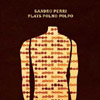 Following the 2003 release of Like Hearts Swelling, Sandro Perri began performing under his own name, incorporating more organic sounds as opposed to the processing, and perhaps overprocessing, that Polmo Polpo was regarded for. This five-track EP provides a conceptual bridge between the older sound and new sound as it began as reinterpretations of the songs from Like Hearts Swelling but has evolved a bit further.
Following the 2003 release of Like Hearts Swelling, Sandro Perri began performing under his own name, incorporating more organic sounds as opposed to the processing, and perhaps overprocessing, that Polmo Polpo was regarded for. This five-track EP provides a conceptual bridge between the older sound and new sound as it began as reinterpretations of the songs from Like Hearts Swelling but has evolved a bit further.
Originally sold as a four-song CD-R at shows, the most immediately noticable difference is its length. While Like Hearts Swelling was over 45 minutes, this one, with the same number of songs, is only slightly more than 25. The music is what would be expected from that: songs which get to the point a lot quicker than in their original form, which originally stretched to over 11 and 13 minutes at times. Technicalities aside, to me the songs only even faintly resemble the songs bearing the same names on Like Hearts Swelling.
While there's no indication on the CD that there's anybody else performing on these songs than Perri, the songs sound like they're recorded by a group, perhaps the group which has backed up Perri on live dates over the last few years. "Romeo Heart," now "Romeo Heart (Slight Return)," features what sounds like melodica, flute, bass clarinet, and strings along with some manual knob twiddling and very sparse guitar where the original tune was buried under mountains of echoes and delays, a characteristic known by some as "the MSG of experimental music." "Requiem for a Fox," however, sounds like a full band with drums, bass guitar, and vocals, barely even resembling the original, which, in its 11+ minute form took forever to get to the melody of the track, which, at best was rather meandering compared to this new take."Sky Historie" now features muted trumpet alongside the bluesy guitar and chime sounds, and like the previous track, when you add the new vocals in, it's hard to find the similarities with the original.
I'm only convinced that "Dreaming" is Perri alone, as it consists only of vocals with acoustic guitar and what could be a bass drum kick. Both this and the following "Dreaming" sound like they were recorded in my kitchen but they're both endearingly charming. I love Perri's voice here, as it's slightly whimsical but undoubtedly pretty, complimenting the rhythmic guitar, as it is on "Circles," which isn't far from form as "Dreaming."
Sandro Perri has either notably progressed in his abilities as a guitarist and arranger or he's simply less shy about his playing and singing (or a combination of the both), which is a good thing. Perhaps if he goes back to recording as Polmo Polpo, these elements will make their way to the forefront of the songs, but in the meatime, it will be good to hear a full Sandro Perri album.
samples:
Read More
- Administrator
- Albums and Singles
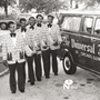 Proof that Jesus must have had soul sits in this collection of "gospel funk" songs. The grooves on these songs are as thick and rockin' as anything any secular performer put to wax, but they're all songs of praise, tolerance, hope, brother/sisterhood, redemption, and soul-fueled love. If the churches around here played this stuff at their Sunday service, I'd be there every weekend, ready to communicate with God.
Proof that Jesus must have had soul sits in this collection of "gospel funk" songs. The grooves on these songs are as thick and rockin' as anything any secular performer put to wax, but they're all songs of praise, tolerance, hope, brother/sisterhood, redemption, and soul-fueled love. If the churches around here played this stuff at their Sunday service, I'd be there every weekend, ready to communicate with God.
The Numero Group
By this time Numero Group may not need an introduction. To be clear, however, the folks at Numero go deep-record diving and release music from the prisons of unused 45 singles and geographically confined locations. They've released music from across the world, spanning genres that have nothing to do with each other and, with the advent of Good God!, they've now pulled together a collection of music from a "genre" that never really existed. The notion of funky gospel might not be entirely alien to everyone, but the second this record comes on and "Jesus Rhapsody" by Preacher and the Saints starts up with a low-end groove and a pounding drum track, it's pretty evident that this collection is something special. There's more than just funk here, there's a sexy soulful delivery at work in these songs of praise. Imagine that, a little something special in the ecstasy of religion.
There's not a cut on this compilation that doesn't deserve to be talked about. The push of congo lines, the heavy thump of a drummer going crazy beside the chants and cries of a choir, a completely out of this world cover of the classic "Wayfaring Stranger," the movement of a wah-wah pedal through the shouts of a preacher, and many others make every song feel extra special. The albums that some songs were pulled from weren't as funky as what's represented here. Numero is careful to detail (in their excellent booklet) that gospel funk wasn't really a movement or a genre. These are choice cuts from records most lovers of funk probably wouldn't have ever bothered listening to. Every track on here is bursting with an energy that's has no comparison, but it's just as likely to make people dance and sing as it is to bring people to the light of their Lord.
No matter how much I feel religion is responsible for some of the worst atrocities the world has ever seen, this disc reminds me that love, compassion, concern, peace, and happiness all have some kind of spiritual root or that the spiritual must participate in those things somehow. It's hard not to feel good, not to move along to the funk that these worshippers threw up to the heavens. This is funky and soul, not doubt, and all at the same time there's an extra spark, and I'll dare to call it divine, that pushes these songs over the edge and into a high-class division that's all their own.
Any sort of discrimination shouldn't keep anybody from tuning in to something that represents a good portion of the American landscape and of American musical history. This is the stuff that the USA is made of (at least, in part) and, happily, there's as much joy in these songs as there is sadness. For every seemingly crushing event there's that bit of hope and celebration in this music that makes it utterly priceless. Besides all that, every song on here is incredible: a perfectly balanced blend of rhythm and blues, soul, and songs of praise. It makes all the gospel that's selling at the local major chain stores sound dull, like the product of some helpless and unimaginative individuals who don't really know how they feel or what they believe. The message that bleeds out of the speakers on this collection is unmistakable: "Music can cure us of our ills! Praise Jesus!" Be it right or wrong, it is a powerful and beautiful thought and it drives some of the most fun and upbeat music I've ever heard. Hallelujah and amen, then: for once I feel like those words are appropriate.
samples:
- Voices of Conquest - Oh Yes My Lord!
- Trevor Dandy - Is There Any Love
- Shackleford Singers - God Is All Over Me
Read More
- Matthew Jeanes
- Albums and Singles
Cavalcade of Glee... is, to my ears at least, quite a bit more restrained and straight forward than I would have imagined. It seems that Funk may be skipping past the impulse to make a more fucked up and twisted noise than before in favor of honing in on songwriting. Of course this is bound to confound the legions who want to slow down his tracks, deconstruct his beats, download his software, and pick apart the magic that is making music with computers. What's interesting about this is that with this album at least, the real accomplishment is not how nervously tweaked the rhythms and melodies are, but how cleanly and thoughtfully the songs are put together. The sample spotters and software hackers are asking all of the wrong questions if they want to get to the bottom of this mojo, because it's not the tools and gigabytes of RAM that make this record work—it's the attention to the art of writing a song.
It seems simple enough—if you want to release an album, you ought to first start with some songs, but that's a path that many who make music with computers tend to skip entirely. What makes this record listenable and distinct is that the songs have hooks, the melodies are developed to build over time, and the silly spray of samples actually helps give the songs character rather than feeling like obligatory sonic detritus.
Breakcore records, producers, mp3s, and shows are pouring out of odd basements and garages all over the place now. The scene as a whole has few standouts and hundreds of copycats releasing music that is often indistinguishable. Funk's own discography is so abundant that by the time this review will be published, it's probably not even going to be a review of his latest release. Still, what is now setting Venetian Snares apart from the imitators is his ability to congeal the furious elements of a niche genre into something that transcends that genre.
Read More
- Administrator
- Albums and Singles
Read More
- Administrator
- Albums and Singles
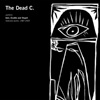 Disliked in their native country of New Zealand, associated with drug-assisted hallucinations and blackouts, and evidently crazy enough to plan their own deaths, the trio of Michael Morely, Robbie Yeats, and Bruce Russell also happen to be more brilliant than most bands they're compared to. This collection is superb: competent enough to entice new listeners and pull in folks that already love their music and want more.
Disliked in their native country of New Zealand, associated with drug-assisted hallucinations and blackouts, and evidently crazy enough to plan their own deaths, the trio of Michael Morely, Robbie Yeats, and Bruce Russell also happen to be more brilliant than most bands they're compared to. This collection is superb: competent enough to entice new listeners and pull in folks that already love their music and want more.
The first disc covers everything from their first album up and until 1994. Songs from out of print 7" records, compilations, and album cuts all make into these first 13 productions. "Max Harris" is the first song from this New Zealand trio's first album, DR503, and it's an oddly tuneful mess of sound effects, solid rhythm, and some very nasty guitar. It's designed to repel and attract at the same time, as though it is constantly pulled back and forth between absolute improvisational performance and carefully planned, obsessively designed songs. "Angel" wants to be a love tune, but is too busy reveling in the discovery of reverb and echo to sober up and say what it means. "3 Years" sounds like it was intended to be a pop song, but the group never bothered to record it outside of their garage. While these three opening songs present very different perspectives. It is as close to getting lost in a city as I can get without starting up my truck and driving into Boston at night without a map. In a magnificent way, however, the buzz of the next song, "Maggot," pulls this triad of sound together.
"Maggot" is a huge and rhythmic monster of droning bass with the mutterings of a drunk prophet ready to utter his final breath. The music is moody, deep, and full of sound despite being the product of a trio. It creeps along at a pace that feels contagious, like it's a disease. Then Morely lets out this demented laugh and I'm certain the group must've been absolutely insane to make something like this. This is rock music of some kind, but aurally swathed in the kind of mystery that other bands can only pretend to possess. The nature of their songs inspires a sense of the massive and the unreal but it never escapes into pure fantasy. There's a visceral edge to their music that prevents them from escaping into pure fantasy, into some completely abstract realm where the music has no context and no human impact. This is, in the end, the best thing about this band: they keep their weird side in check all the time, with slowly pulsing melodies and simple rhythms or sometimes with huge amounts of noise rippling through their otherwise simple and attractive songs. Everything on the first disc is a song, something that stays in my head all day long. All of these songs come adorned though, they're filled to the brim with interesting details, enough to keep me coming back to the disc over and over again. Keeping it simple is something The Dead C. does very well. The result, however, is that the experience of listening to their music evolves and becomes complex. There seems to be so little to this band on the surface, but once drug into their songs, it's hard not to find something new with each listen.
The second disc moves from The Operation of the Sonne album from 1994 to The Damned record released in 2003. Through these songs it's apparent that the band went through a transitory period right in the middle of the '90s and ended up giving in to their improvisational tendencies. "The Marriage of Reason and Squalor" is a 14 and a half minute adventure in feedback and strange effects that never really takes on the trappings of a familiar song. Even the brief "Voodoo Spell" is mostly aimless experimentation, perhaps fun to listen to when in the right mood, but after listening to the first disc, it's a bit of a let-down. Had I listened to the second CD before the first one, chances are I would like it far more than I do, now. The music isn't bad, but it doesn't stack up the all the goodness that the first CD provided.
This is, however, a minor complaint about compilation that does everything right. It introduces The Dead C. to the ignorant gracefully, covers every base possible in such a limited space, and provides something for the fan that doesn't want to spend half a year's salary getting the small pieces missing from their collection. It presents the multiple faces of a band that had, perhaps, too many of them to count and it does without flinching away from the more unadulterated and formless material they fell in love with later in their career. I'm talking about them like their work is done, however, and I don't think that's the case. They played in the USA in 2002 at All Tomorrow's Parties and in 2004 they played at another music fest in Scotland. They're also on board for Thurston Moore's 2006 ATP fest in the UK. I get the feeling The Dead C. hasn't seen their last release and if this retrospective is any indication, they're still a band worth hearing.
samples:
Read More
- Administrator
- Albums and Singles
 This worthy album by sextet Sparrows Swarm and Sing links traditional song with post-rock and pantheist imagery. SSAS create beautiful music with apocalyptic undercurrents which at times achieves a cinematic splendor.
This worthy album by sextet Sparrows Swarm and Sing links traditional song with post-rock and pantheist imagery. SSAS create beautiful music with apocalyptic undercurrents which at times achieves a cinematic splendor.
The complex instrumentation includes glockenspiel, cello, guitar, pianorgan, violin, drums and bass guitar. The band is composed of trained composers, visual artists and recording engineers, so the songs are complex, sophisticated and often extended in length. "Across Canyons/Canyons" begins with the sounds of twittering birds and a faint lonely guitar, then swells into an extended piece of sublimely simple melancholy. Reaching a crescendo around the 11-minute mark, it then lulls and peaks pleasantly for another quarter of an hour or so. Obviously, brevity and economy aren't the main goals for SSAS.
Normally I much prefer this kind of music to be purely instrumental pieces, or have only a light sprinkling of spoken word. Unfortunately, "Father Death/Mother Nature (Part 1)" includes vocals in addition to some very irksome yelling. I'd like to notify the members of SSAS: “You aren’t a mini-skirted chanteuse or a goosebump-inspiring choir of Bulgarian women in national costume, nor are you Marc Bolan, so please stop spoiling your music with your wordless vocals.” However, looking at Jason Fiske’s artwork—an anonymous pioneer, a praying figure bereft of flesh, the lifeforce streaming out of a deer's eyes, and the moon—the realization dawned on me that SSAS are simply communicating uncorrupted exuberance. I should let them be. In live performance, these vocals would probably work better in any case. Either way, the guitar backdrops during the second movement of the piece—strongly evocative of the epic yet understated qualities of Brokeback—and the final movement which digresses into a nice free-folk-jazz freak-out, are both worth the trip.
"Warm Blood Within (Part 2)" begins with a dynamic riff that is more Michael Nyman than Mogwai, then slips into unsatisfying vocals for a while. Thankfully, SSAS have the good sense to cut this short with a splendid cacophony, followed by a long section of stately cello, violin and piano. Once again, all is forgiven.
The final piece, "O Shenandoah," borrows a refrain from a traditional American folk song that has been collected by Alan Lomax and Carl Sandburg, among others, and is known variously as a West Indies rowing shanty, a river song, or a US army song. The song has various spellings and versions, but it is known to cavalry and wagon soldiers of the Old West, as well as Canadian and American mountain men, traders, voyagers and trappers. It's old as the hills. My favorite version refers to the courtship of a white trader and a daughter of the Indian chief, Skenandoah, an Iroquois. They happily ran away together but were caught, with consequences more severe than those suffered by Abelard and Heloise.
Somehow, SSAS do justice to a classic song like "O Shenandoah" without sounding like an embarrassing 21st century campfire sing-along. Lyrically, they shift back and forth from the river as metaphor, to the chief's daughter, before what sounds like bombs falling in the night and an eerie super-amplified wine glass announce the return of the apocalyptic post-rock beauty for which this collective are known. More tempered vocals appear before we are treated to a great quivering otherworldly ending which could almost come from the work of the late György Ligeti.
samples:
Read More
 On his Kranky debut, Tokyo-based Chihei Hatakeyama sticks to making soundscapes which are quite enjoyable. Granted it is fairly mundane in 2006 to be pursuing glitchy processed music but Minima Moralia clicked with me. The album is cold and bright, and it has an austere quality which I like.
On his Kranky debut, Tokyo-based Chihei Hatakeyama sticks to making soundscapes which are quite enjoyable. Granted it is fairly mundane in 2006 to be pursuing glitchy processed music but Minima Moralia clicked with me. The album is cold and bright, and it has an austere quality which I like.
- Administrator
- Albums and Singles
Read More
- Administrator
- Albums and Singles
Article Published Aug 23, 2006 DavePehling http://www.sfweekly.com/Issues/2006-08-23/music/reviewed3.html Who / What:The HeadsMusic Genre:Rock/Hip HopMusic Label:Alternative Tentacles Despite being one of the more creative bands to emerge from the lemminglike tide of late ’90s stoner-rock acts committed to vinyl by the Man’s Ruin imprint, talented British fuzz merchants the Heads somehow never got the Stateside audience they deserved. Straddling Stooges-inspired fury and droning, Hawkwind-esque deep space exploration, the Heads churn out a psych-punk maelstrom that answers the rhetorical question “What would Sonic Youth sound like if it sported a massive set of hairy balls?” The domestic release of Heads’ latest effort, Under the Stress of a Headlong Dive, reveals just how developed its corrosive Big Muff alchemy has become over the years. Anchored by the monolithic guitar squall of founder Simon Price and fellow six-string terrorist Paul Allen, the Heads bash out careening, catchy heaviness on “Earth/Sun,” the conga-driven “pass, the void” [sic] and “Your Monkey Is My Master,” standing equal to the best of Mudhoney and early Monster Magnet (before Dave Wyndorf stopped doing drugs). Factor in some loopy, mind-warping psychedelic interludes and a couple of thoroughly engaging extended freakouts (the nearly 20-minute epic “Stodgy” and “Creating in the Eternal New Is Always Heavy”) and you have a serious contender for most bongtastic album of 2006.
Read More
- Administrator
- Albums and Singles
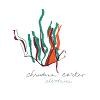 This is a poorer than average effort from Christina. The four pieces are all meant to sound similar as they are all in the same key and made of the same chords, but for me, the results show little development beyond self indulgent jamming and sound thrown together and boring. This concept sounds less than exciting on paper and in practice it doesn't work as well as hoped.
This is a poorer than average effort from Christina. The four pieces are all meant to sound similar as they are all in the same key and made of the same chords, but for me, the results show little development beyond self indulgent jamming and sound thrown together and boring. This concept sounds less than exciting on paper and in practice it doesn't work as well as hoped.
The droning guitar strums and Carter’s chanting of "Second Death" are promising for the first half of the song but the song loses its way around the six minute mark. It seems to get away from her and ends up covered in messy noodling that destroys the vibes that she has built up in the first few minutes. This is a similar story for the rest of Electrice. Throughout the album there are moments that could easily erupt into something more compelling but Carter always seems to pull back at the last minute. “Moving Intercepted,” the best piece on Electrice, has a touch of Swans about it, the guitar playing and vocals sound like they’re leading up to a crescendo but it never delivers. The first half of both these two songs ("Second Death" and "Moving Intercepted") are deceptively good. It's unfortunate that both pieces just fall apart and go nowhere, which can be said of this album as a whole.
The concept of using the same guitar tuning and chords hasn't achieved the results intended. It’s not a bold or an adventurous move. It instead highlights the limitations of Carter’s songwriting instead of showing how well she can use a limited palette. While she uses different effects on the different pieces to change the tone of the drone that she builds up with her playing, the four pieces are too samey. Any track taken on its own is fine but altogether it sounds more like multiple takes of one song rather than four distinct songs. This makes it hard to listen to as it feels like a bunch of demos that might lead to one great song in the end.
It's a shame because I know she's capable of better but Electrice and I don't see eye to eye.
samples:
Read More

